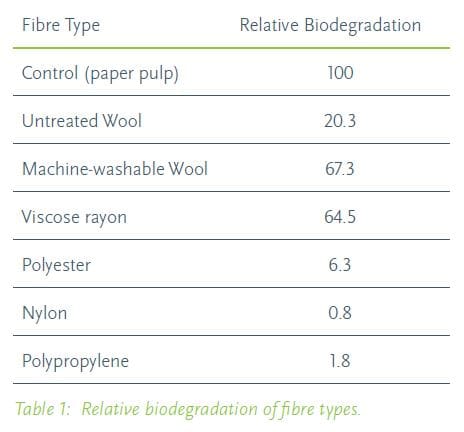
Both untreated wool and machine-washable wool biodegrade to a high degree, new research shows.
What happens to textile fibres once they enter freshwater systems and the sea?
It’s a question that received scant attention until the recent rise of concern over microfibres.
A substantial body of research firmly establishes how wool biodegrades on land, but far less was understood of its behaviour in the aquatic environment – until now.
Findings released by New Zealand research institute AgResearch now reveal the biodegradation rates of various textile fibres in the marine environment. The research, led by Dr Stewart Collie, followed the path of the fibres released by domestic laundry processes, examining how the breakdown process occurs.

The amount of biodegradation of the fibres is expressed relative to a ‘positive control’, i.e. a sample known to biodegrade readily. In this study, kraft paper pulp was used. The average biodegradation of three samples for each fibre type relative to the control was measured
Reprinted by IWTO

 Service :400-616-3535
Service :400-616-3535
 Tel: +86 512 63365510
Tel: +86 512 63365510
 Fax:+86 512 63341238
Fax:+86 512 63341238
 Mail: Info@ylfj.com.cn
Mail: Info@ylfj.com.cn
 Wechat:szylfg_public
Wechat:szylfg_public
 Add:No.9, East KaiFa Rd, Wanping Community, Taihu New Town, Wujiang District, Suzhou, China
Add:No.9, East KaiFa Rd, Wanping Community, Taihu New Town, Wujiang District, Suzhou, China
 Sweep, Follow Us
Sweep, Follow Us